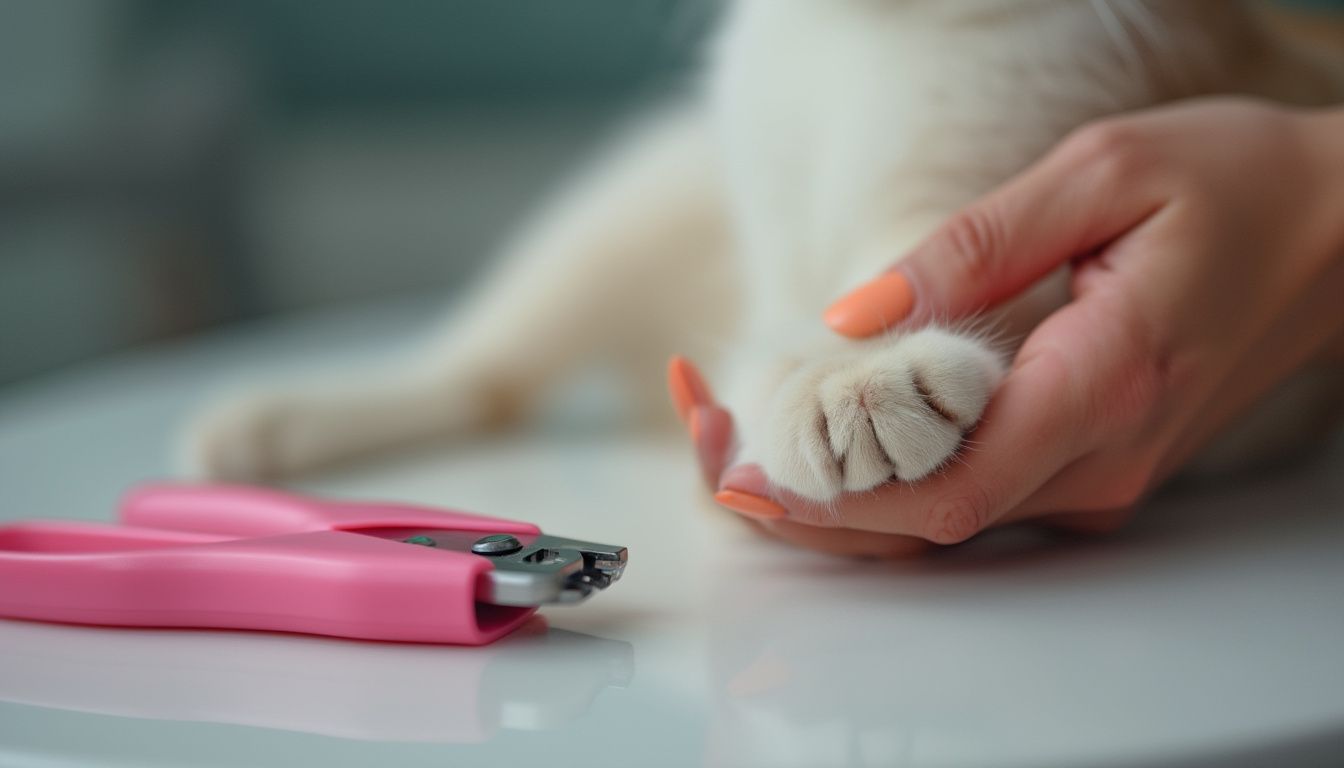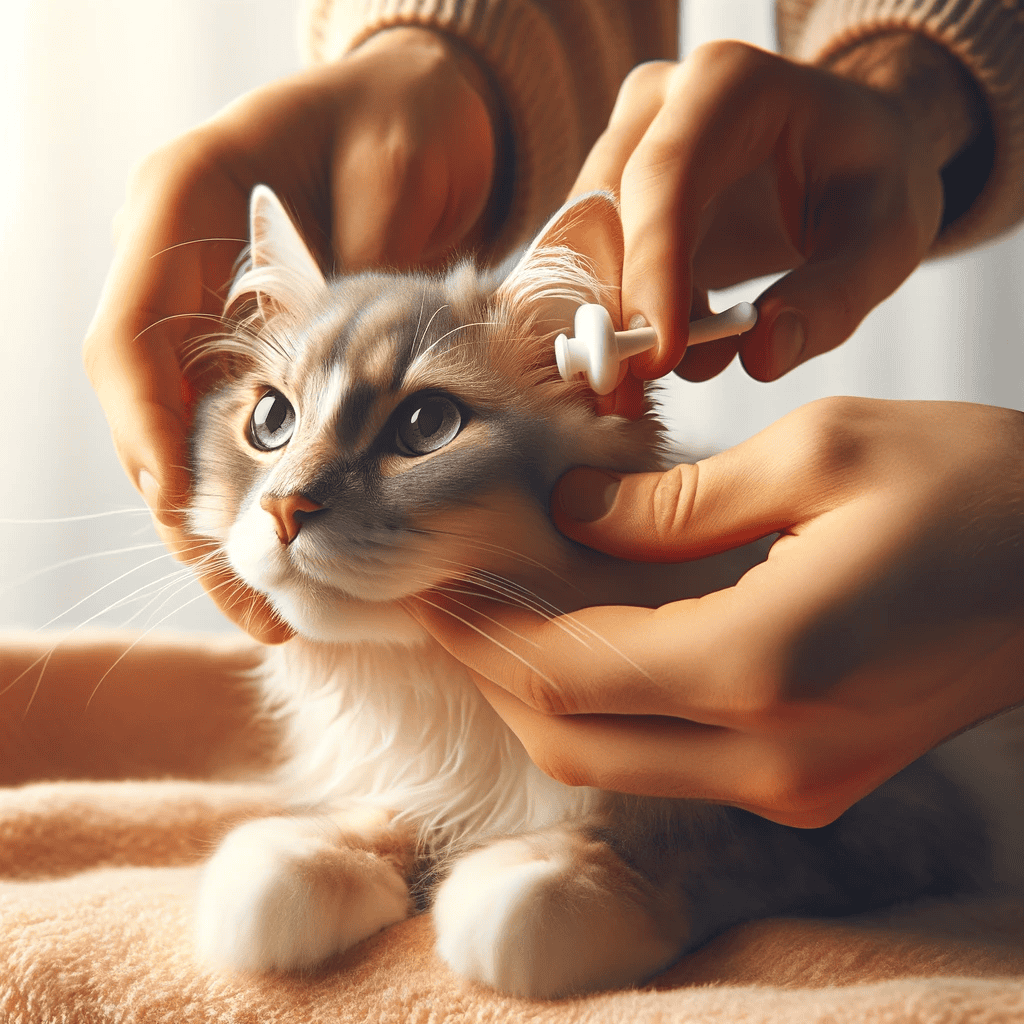
Trimming your kitten’s nails can feel like a daunting task, but it doesn’t have to be. Many pet owners worry about causing stress during this process. However, creating a calming environment can transform this grooming routine into a bonding experience. With some patience and gentle techniques, you can make nail trimming a positive event. A calm approach not only benefits your kitten but also makes the task easier for you.
Learning how to trim kitten nails without stress is essential for maintaining a harmonious relationship with your furry friend. Remember, having a calming atmosphere is key to success.
Why Trimming Kitten Nails is Important
Trimming your kitten’s nails might seem like a small task, but it plays a big role in their overall health and happiness. You will find out why this routine is so crucial for your furry friend.
Health Benefits
Keeping your kitten’s nails trimmed is essential for their well-being. Long nails can cause discomfort and even pain if they snag on carpets or other surfaces. Regular trimming helps prevent these issues, ensuring your kitten stays comfortable and happy. According to experts, trimming your kitten’s nails every two weeks or once a month is recommended to keep them from becoming too long and sharp.
Such routine not only prevents discomfort but also reduces the risk of nail-related injuries.
Preventing Damage to Furniture and Skin
Kittens are naturally curious and playful, which means their sharp nails can easily damage your furniture and even your skin. By keeping their nails trimmed, you protect your belongings and yourself from accidental scratches. This simple act can save you from costly repairs and keep your home looking its best. Plus, it helps teach your kitten good habits early on, making them more pleasant companions as they grow.
Incorporating regular nail trimming into your kitten’s care routine offers numerous benefits. It ensures their comfort, protects your home, and fosters a positive relationship between you and your pet.
So, grab those clippers and make nail trimming a regular part of your kitten’s life!
What You Need
Getting ready to trim your kitten’s nails involves gathering the right tools and creating a Comfort Zone for both you and your furry friend. Having the right equipment and setting the stage for a calm experience can make all the difference.
Essential Tools
To start, you’ll need a Cat Nail Clipper Kit. This kit is specially designed for feline claws, ensuring a safe and effective trim. Using a human nail trimmer might seem convenient, but it can lead to injuries or splintered nails.
So, stick with tools made for cats to keep things smooth and stress-free.
Here’s a quick list of what you should have on hand:
-
Cat Nail Trimmer: A must-have for precise and safe trimming.
-
Styptic Powder: Handy in case of accidental nicks to stop bleeding quickly.
-
Towel or Blanket: Useful for wrapping your kitten gently if they get squirmy.
Optional Supplies for Comfort
Creating a Comfort Zone for your kitten can make the nail-trimming process much more pleasant. Consider these optional supplies to enhance the experience:
-
Comfort Zone Calming Diffusers: These diffusers release pheromones that help soothe your kitten, making them feel more at ease. Place them in the room where you plan to do the trimming.
-
Comfort Zone Calming Collar: This collar can provide continuous calming effects, perfect for kittens who are particularly anxious.
-
Treats and Toys: Use these as positive reinforcement. Reward your kitten with a treat or playtime after each successful trim to associate the experience with something enjoyable.
Creating a Comfort Zone isn’t just about physical items. Your demeanor plays a huge role too. Speak softly and move slowly to maintain a calm atmosphere. This approach helps your kitten feel secure and makes the trimming process a breeze.
Remember, the goal is to make nail trimming a routine part of your kitten’s life without stress. With the right tools and a Comfort Zone, you’ll be well on your way to achieving that.
Who Should Try This?
Trimming your kitten’s nails can be a rewarding experience, but it’s not for everyone.
Let’s explore who might find this task enjoyable and manageable.
Pet Owners Comfortable with Handling Kittens
If you’re someone who feels at ease when handling kittens, you’re already on the right track. Being comfortable with your furry friend is crucial. It allows you to approach the task with confidence and ease. When you feel relaxed, your kitten will likely mirror that calmness. This mutual comfort creates a positive environment for nail trimming.
Handling kittens involves more than just physical contact. It’s about understanding their body language and responding appropriately. If you can gently hold your kitten without causing distress, you’re well-suited for this task.
Remember, starting young helps kittens get used to having their paws touched. This early exposure makes future nail trims much smoother.
Individuals with Patience and a Gentle Approach
Patience is your best friend when it comes to trimming kitten nails. If you possess a gentle demeanor and can remain calm under pressure, you’ll excel in this role. Kittens can be squirmy and unpredictable. A patient approach ensures you don’t rush the process, reducing the risk of accidents.
A gentle touch goes a long way. Speak softly and move slowly to keep your kitten at ease. This approach not only makes the experience pleasant but also strengthens your bond with your pet.
If you can maintain a soothing presence, you’ll find nail trimming to be a rewarding routine.
Do Not Try This If
Trimming your kitten’s claws can be a rewarding experience, but it’s not for everyone. You need to feel comfortable and confident when handling your furry friend.
You Are Uncomfortable Handling Animals
If you find yourself uneasy around animals, especially when it comes to handling them, trimming your kitten’s claws might not be the best task for you. Kittens can sense your discomfort, which can make them anxious too. This anxiety can lead to a stressful experience for both of you. Instead, consider seeking help from a professional groomer or veterinarian. They have the expertise and confidence to handle your kitten’s claws safely and effectively.
Handling a kitten requires a gentle touch and a calm demeanor. If you’re not comfortable with this, it’s okay to ask for help.
Your kitten’s well-being is the priority, and ensuring they have a positive experience is essential. Remember, it’s better to leave the task to someone experienced than to risk causing stress or injury to your kitten.
The Kitten Shows Signs of Severe Anxiety
Kittens, like humans, can experience anxiety. If your kitten shows signs of severe anxiety during claw trimming, it’s crucial to stop and reassess the situation. Signs of anxiety can include excessive squirming, vocalizing, or trying to escape. Forcing the process can lead to a negative association with claw trimming, making future attempts even more challenging.
Creating a calm environment is key to reducing anxiety. Use soothing tones and gentle movements to help your kitten feel at ease. If anxiety persists, consider breaking the task into smaller sessions.
Trim just a few claws at a time, allowing your kitten to acclimate gradually. You can also use calming products, like pheromone diffusers, to create a more relaxed atmosphere. In some cases, severe anxiety may require professional intervention. A veterinarian or animal behaviorist can provide guidance and support to help your kitten overcome their fears.
Remember, patience and understanding are vital when dealing with an anxious kitten. Your goal is to make claw trimming a positive experience, not a stressful one.
Step-by-Step Guide to Trimming Kitten Nails
Trimming your kitten’s nails can be a breeze with the right approach. Let’s dive into a step-by-step guide that will help you and your furry friend have a stress-free experience.
Gather Necessary Supplies
Before you start, make sure you have everything you need. Having the right tools at hand can make the process smoother and more efficient. Here’s a quick checklist:
-
Cat Nail Trimmer: Essential for a precise cut.
-
Styptic Powder: Useful in case of accidental nicks to stop bleeding.
-
Towel or Blanket: Helps keep your kitten secure if they get squirmy.
-
Cat Calming Supplements: Consider these if your kitten tends to get anxious.
Having these supplies ready ensures you’re prepared for any situation. It also helps you stay calm, which is crucial for a successful nail-trimming session.
Create a Calm Environment
Creating a calm environment is key to reducing your kitten’s anxiety. A peaceful setting can make a world of difference. Here are some tips:
-
Choose a Quiet Room: Avoid noisy areas that might startle your kitten.
-
Use Cat Calming Supplements: These can help soothe your kitten and make them feel more at ease.
-
Play Soft Music: Gentle tunes can create a relaxing atmosphere.
A calm environment not only helps your kitten but also makes the task easier for you. Remember, alleviating fear and anxiety can lead to a more peaceful nail trimming session.
Acclimate the Kitten to Handling
Acclimating your kitten to handling is an important step. It helps them get used to the sensation of having their paws touched. Here’s how you can do it:
-
Start Slowly: Begin by gently touching your kitten’s paws during playtime. This helps them get acquainted with the sensation.
-
Use Treats: Reward your kitten with treats when they allow you to touch their paws. This positive reinforcement encourages good behavior.
-
Assessing Kittens Feature: Pay attention to your kitten’s body language. If they seem relaxed, you’re on the right track.
Acclimating your kitten to handling takes time and patience. But with consistent effort, your kitten will become more comfortable with the process. This step is crucial for a smooth nail-trimming experience.
Identify the Parts of the Nail
When you’re ready to start trimming your kitten’s nails, it’s crucial to understand the anatomy of a cat’s claw. This knowledge helps you avoid cutting too close to the quick, which can cause pain and bleeding. The quick is the pink part inside the nail that contains nerves and blood vessels.
You should aim to cut only the white part of the nail, which is the safe zone.
Here’s a simple way to identify the parts:
-
Extend the Claw: Gently press on your kitten’s paw pad to extend the claw. This gives you a clear view of the nail.
-
Locate the Quick: Look for the pinkish area inside the nail. This is the quick, and you should avoid cutting it.
-
Spot the White Part: The area beyond the quick is the white part. This is where you should make your cut.
Understanding these parts ensures a safe and stress-free nail trimming session. It also helps build your confidence in handling the clippers.
Trim Only the White Part
Once you’ve identified the white part of the nail, it’s time to trim. Use cat nail clippers designed specifically for feline claws. These tools provide a clean and precise cut, reducing the risk of splintering.
Follow these steps for a successful trim:
-
Position the Clippers: Hold the clippers at a 45-degree angle to the nail. This angle helps you make a smooth cut.
-
Make the Cut: Gently squeeze the clippers to cut the white part of the nail. Avoid cutting into the quick.
-
Check Your Work: After each cut, inspect the nail to ensure you haven’t cut too close to the quick.
Trimming only the white part minimizes discomfort for your kitten and makes the process more pleasant for both of you.
Use Positive Reinforcement with Treats and Praise
Positive reinforcement plays a vital role in making nail trimming a positive experience for your kitten. By associating the process with treats and praise, you help your kitten feel more comfortable and relaxed.
Here’s how to incorporate positive reinforcement:
-
Offer Treats: After each successful trim, give your kitten a small treat. This reward reinforces good behavior and encourages cooperation.
-
Praise Your Kitten: Use a gentle voice to praise your kitten during and after the trimming session. Words of encouragement help create a positive atmosphere.
-
Take Breaks: If your kitten becomes restless, take a short break. This pause allows them to relax and prevents stress.
Creating a calm environment, using positive reinforcement, and taking breaks can alleviate fear and anxiety during nail trimming. This approach leads to a more peaceful and enjoyable experience for both you and your kitten.
Potential Challenges
Trimming your kitten’s nails can be a rewarding experience, but it comes with its own set of challenges. Understanding these potential hurdles can help you prepare and ensure a smoother process for both you and your furry friend.
Kitten Anxiety
Kittens, much like humans, can feel anxious during unfamiliar activities. Nail trimming might seem daunting to them at first. You might notice signs of anxiety such as squirming, vocalizing, or trying to escape.
These reactions are normal, especially if your kitten is new to the experience.
To ease your kitten’s anxiety, create a calm environment. Choose a quiet room where your kitten feels safe. Speak softly and use gentle movements to reassure them.
You can also try using cat calming supplements or pheromone diffusers to help soothe their nerves. These products release calming scents that can make your kitten feel more at ease.
Tips to Reduce Anxiety:
-
Start Early: Begin nail trimming when your kitten is 6-8 weeks old. Early exposure helps them get used to the process.
-
Use Treats: Find a delicious cat treat that keeps your kitten focused and rewards them after each successful trim.
-
Break It Down: If your kitten becomes too anxious, trim just a few nails at a time. Gradually increase the number as they become more comfortable.
Accidental Bleeding
Accidental bleeding can occur if you cut too close to the quick, the sensitive part of the nail containing nerves and blood vessels. This can cause discomfort for your kitten and might make them wary of future trims.
To prevent this, always use proper cat nail clippers. These tools are designed to provide a clean and precise cut.
Before you start, observe your kitten’s nails carefully. Identify the quick and aim to cut only the white part of the nail.
Steps to Handle Accidental Bleeding:
-
Stay Calm: If bleeding occurs, remain calm to avoid alarming your kitten.
-
Apply Styptic Powder: Use styptic powder to stop the bleeding quickly. This powder helps clot the blood and provides relief.
-
Reassure Your Kitten: Offer treats and gentle words to comfort your kitten after the incident.
Accidental bleeding is a common challenge, but with careful observation and the right tools, you can minimize the risk. Remember, patience and practice are key to mastering the art of nail trimming.
Common Mistake to Avoid
When trimming your kitten’s nails, you might feel a bit nervous. That’s completely normal! However, avoiding common mistakes can make the process smoother and more comfortable for both you and your furry friend.
Cutting Too Close to the Quick
One of the most common mistakes is cutting too close to the quick. The quick is the sensitive part of the nail that contains nerves and blood vessels.
Cutting into it can cause pain and bleeding, which might make your kitten fearful of future trims.
How to Avoid This Mistake:
-
Identify the Quick: Before you start trimming, gently squeeze your kitten’s toe to extend the claw. Look for the pinkish area inside the nail, which is the quick. Aim to cut only the white part of the nail, leaving a few millimeters between your cut and the quick.
-
Use Proper Tools: Invest in a good pair of cat nail clippers. These are designed to provide a clean and precise cut, reducing the risk of cutting too close.
-
Take Your Time: Trim slowly and carefully. If you’re unsure, it’s better to trim less and come back later than to risk cutting too much.
-
Reward Your Kitten: After each successful trim, give your kitten a special treat. This positive reinforcement helps them associate nail trimming with something pleasant.
Rushing the Process
Rushing through the nail trimming process can lead to mistakes and stress for both you and your kitten. It’s important to approach this task with patience and care.
Steps to Avoid Rushing:
-
Set the Scene: Choose a calm, quiet location for nail trimming. Ideally, do this when your kitten is sleepy or relaxed. A peaceful environment helps reduce anxiety.
-
Break It Down: If your kitten becomes restless, trim just a few nails at a time. Gradually increase the number as they become more comfortable with the process.
-
Practice Handling: Spend time handling your kitten’s paws between trimming sessions. This practice helps them get used to the sensation and makes future trims easier.
-
Offer Breaks: If your kitten seems stressed, take a break. Allow them to relax before continuing. This patience shows your kitten that nail trimming isn’t something to fear.
Remember, patience and practice are key to mastering this essential skill. With time, you’ll both become more comfortable and confident in the process.
Trimming your kitten’s nails doesn’t have to be a stressful ordeal. With the right approach, you can turn it into a bonding experience. Remember the key points: create a calm environment, use proper tools, and apply positive reinforcement.
If you encounter persistent issues, don’t hesitate to consult a vet.
Patience is your best ally, and with time, your kitten will become more comfortable with the process. Regular nail trims not only protect your furniture but also ensure your kitten’s comfort and health.

In her previous life, Lisa traveled extensively, both for work and leisure. After the pandemic struck, Lisa locked up her luggage and adopted a cat ever since.
Lisa is now an avid cat lover, she devotes most of her free time serving as butler to her adorable feline at home. When she is not with her cat, she can be seen using her phone sourcing for the latest cat supplies online.


